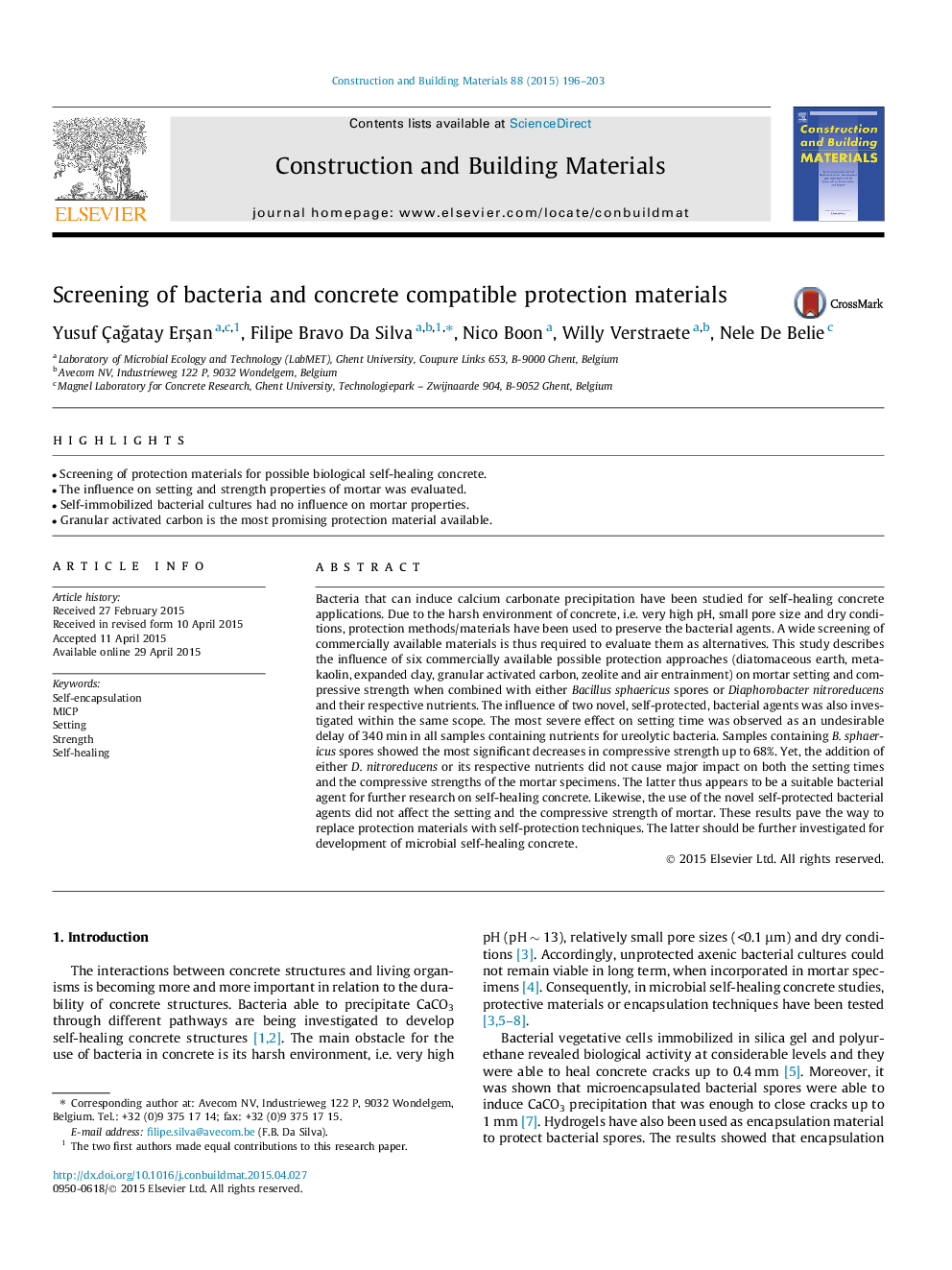| کد مقاله | کد نشریه | سال انتشار | مقاله انگلیسی | نسخه تمام متن |
|---|---|---|---|---|
| 256966 | 503568 | 2015 | 8 صفحه PDF | دانلود رایگان |
• Screening of protection materials for possible biological self-healing concrete.
• The influence on setting and strength properties of mortar was evaluated.
• Self-immobilized bacterial cultures had no influence on mortar properties.
• Granular activated carbon is the most promising protection material available.
Bacteria that can induce calcium carbonate precipitation have been studied for self-healing concrete applications. Due to the harsh environment of concrete, i.e. very high pH, small pore size and dry conditions, protection methods/materials have been used to preserve the bacterial agents. A wide screening of commercially available materials is thus required to evaluate them as alternatives. This study describes the influence of six commercially available possible protection approaches (diatomaceous earth, metakaolin, expanded clay, granular activated carbon, zeolite and air entrainment) on mortar setting and compressive strength when combined with either Bacillus sphaericus spores or Diaphorobacter nitroreducens and their respective nutrients. The influence of two novel, self-protected, bacterial agents was also investigated within the same scope. The most severe effect on setting time was observed as an undesirable delay of 340 min in all samples containing nutrients for ureolytic bacteria. Samples containing B.sphaericus spores showed the most significant decreases in compressive strength up to 68%. Yet, the addition of either D.nitroreducens or its respective nutrients did not cause major impact on both the setting times and the compressive strengths of the mortar specimens. The latter thus appears to be a suitable bacterial agent for further research on self-healing concrete. Likewise, the use of the novel self-protected bacterial agents did not affect the setting and the compressive strength of mortar. These results pave the way to replace protection materials with self-protection techniques. The latter should be further investigated for development of microbial self-healing concrete.
Journal: Construction and Building Materials - Volume 88, 30 July 2015, Pages 196–203
